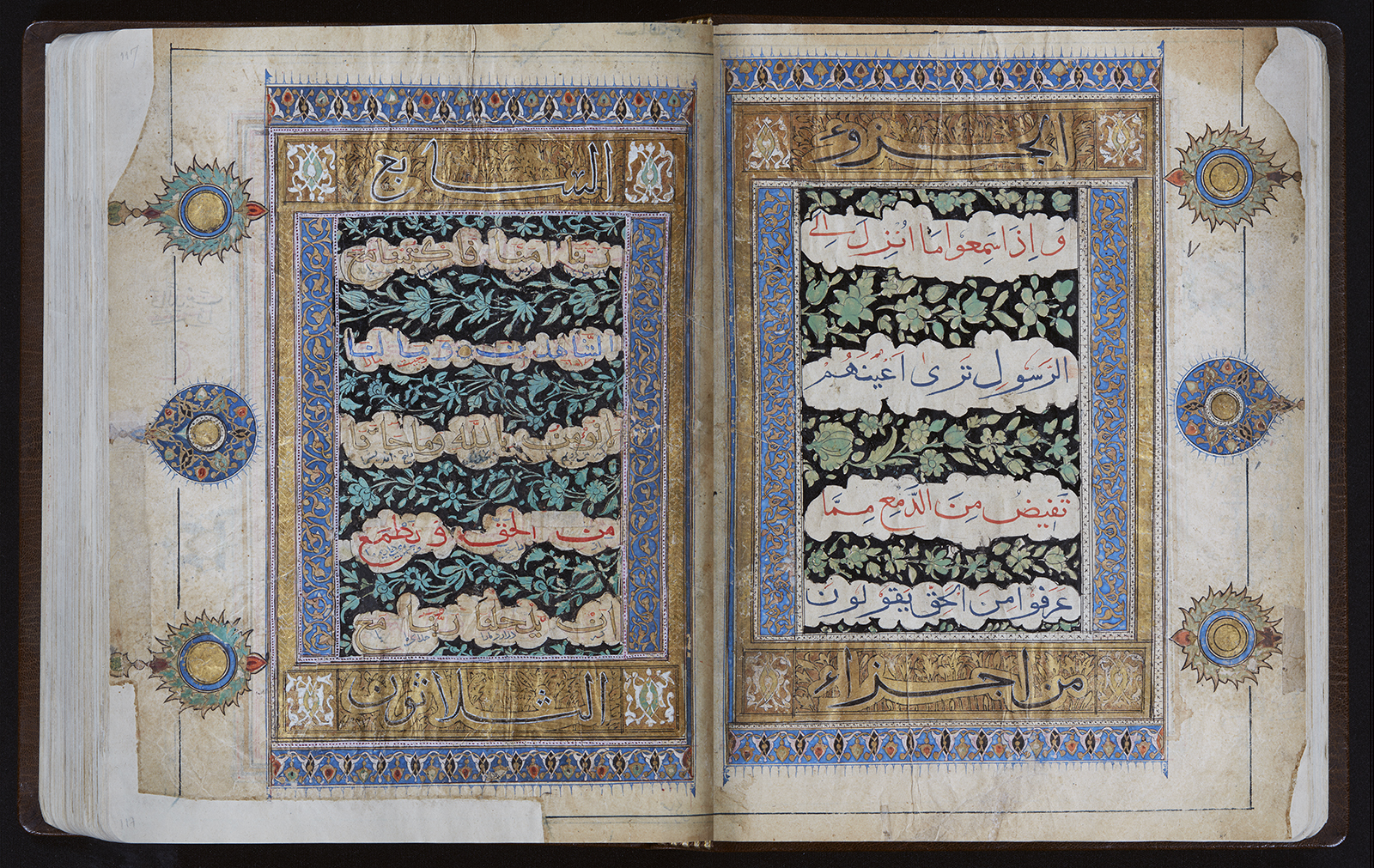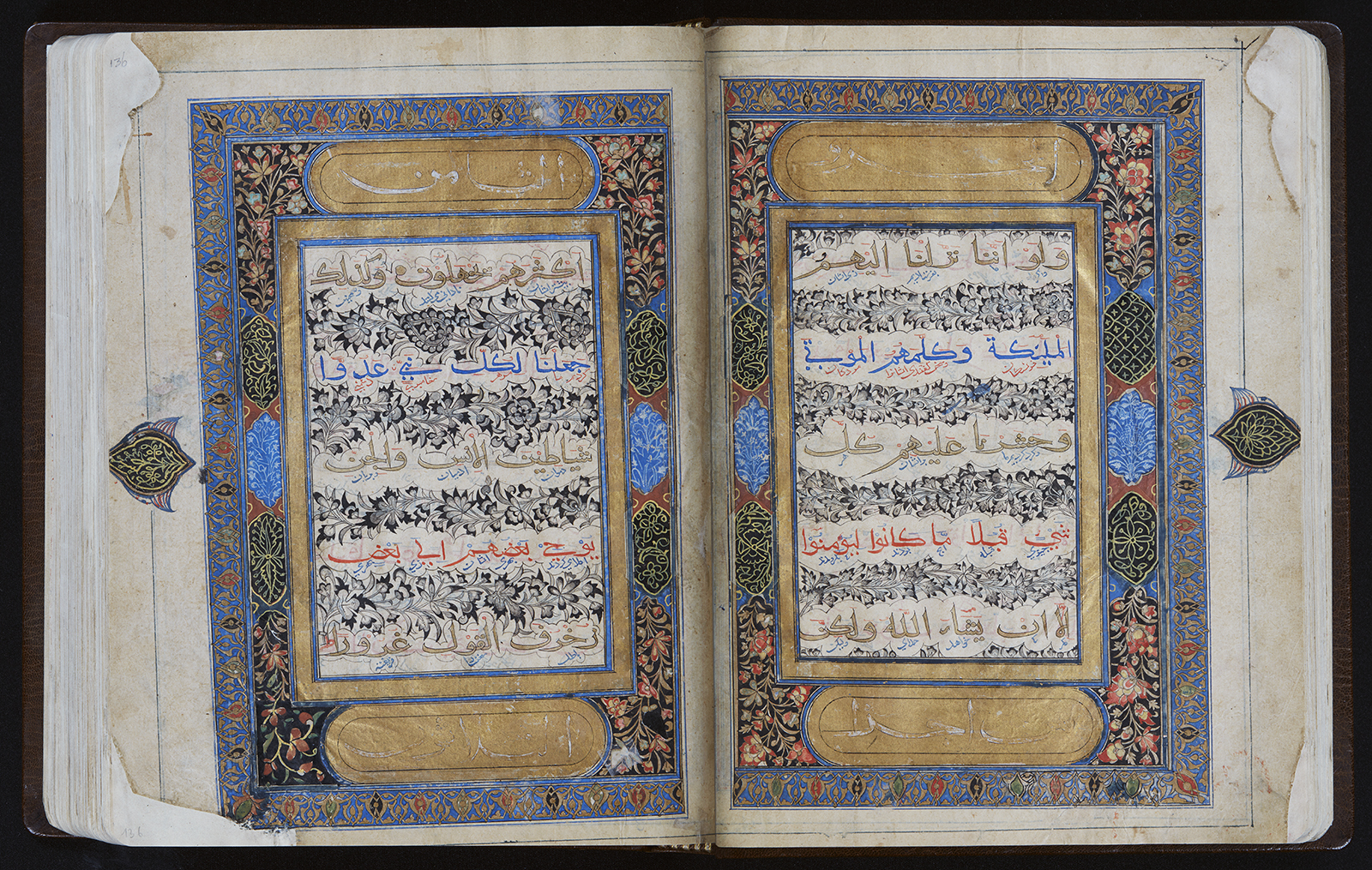Click on the image to zoom
Qur’an Manuscript
- Accession Number:AKM281 (f.189r, f.190v)
- Creator:copied by Mahmud Sha‘ban
- Place:India
- Dimensions:29.8 x 23.5 x 6.6 cm
- Date:7 Dhu’l-Qa‘da 801 AH / 11 July 1399
- Materials and Technique:ink, opaque watercolour, and gold on paper
This manuscript is a rare copy of the Qur’an produced during the Tughluq dynasty (1320–1413) in India. After the invasion of Timur in 1398–1399, the manuscript was taken to Gwalior Fort in southern Agra, where its colophon was completed. This Qur’an is one of the first documented manuscripts written in bihari script, a unique style of writing practiced in pre-Mughal India.
Note: This online resource is reviewed and updated on an ongoing basis. We are committed to improving this information and will revise and update knowledge about this object as it becomes available.




